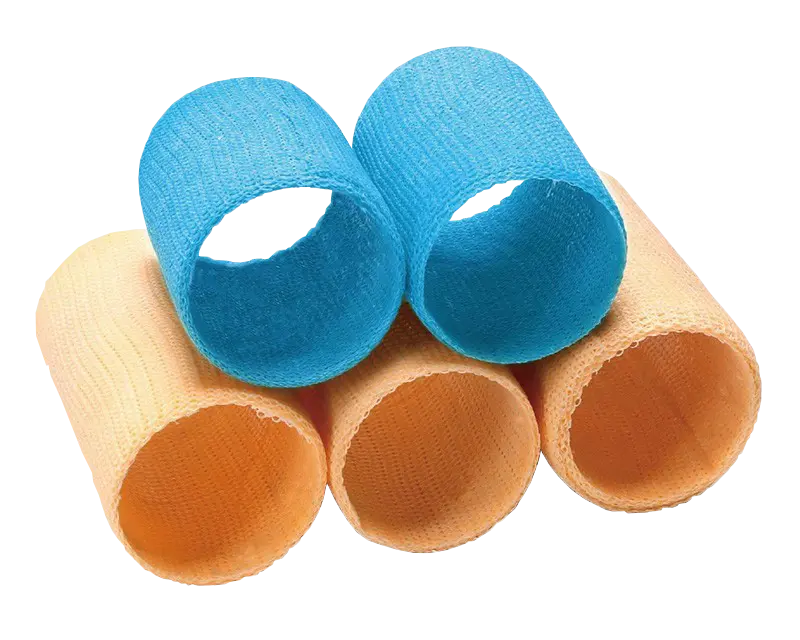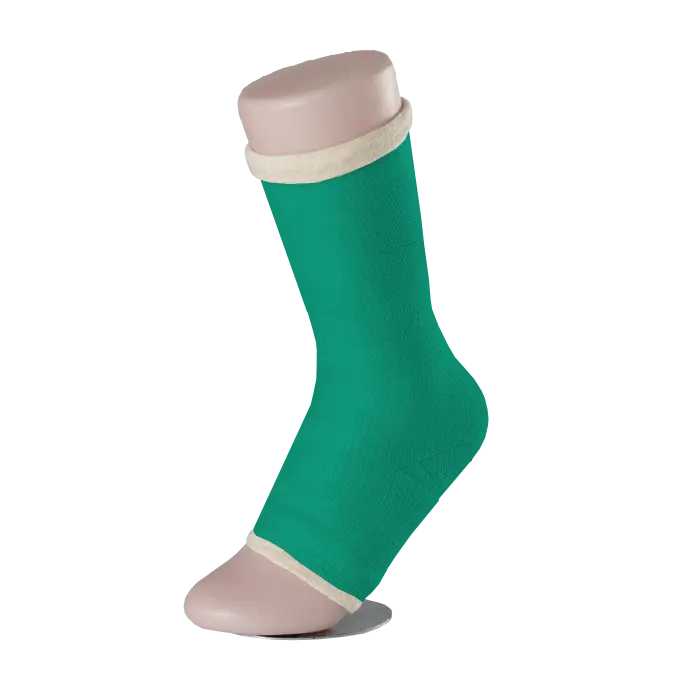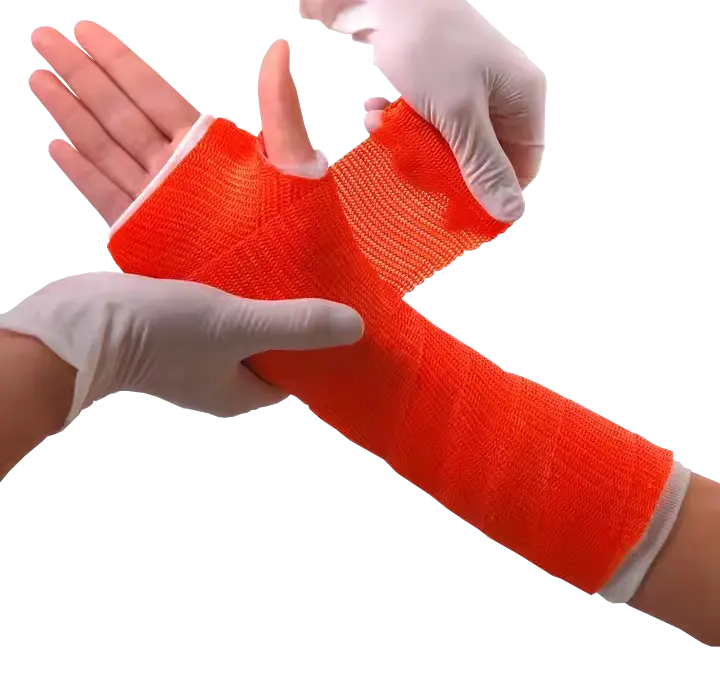In recent years, polymer-based materials have revolutionized the way medical professionals approach wound care, orthopedic treatment, and post-surgical healing. Among these innovations, Polymer Bandages have emerged as a prominent solution in the healthcare sector, offering significant benefits over traditional materials such as plaster casts and gauze dressings. Their superior flexibility, breathability, and strong adhesion make them ideal for a wide range of medical applications. This article explores the growing importance of polymer bandages, their benefits, market trends, and their future in the healthcare industry.
1. Introduction to Polymer Bandages

Polymer bandages are a modern alternative to traditional wound dressings and orthopedic bandages. Made from durable materials such as polyurethane (PU) and other advanced polymers, these bandages provide superior protection for wounds, fractures, and post-surgical sites. Their ability to conform to the body’s shape and movement makes them an ideal choice for patients who need long-term care or are undergoing recovery from surgery or injury.
The growing use of polymer-based bandages is largely driven by their ability to offer a balance of strength, flexibility, and comfort. Unlike traditional materials such as plaster casts, which can be heavy, uncomfortable, and prone to cracking, polymer bandages are lightweight, flexible, and provide optimal ventilation. Additionally, these bandages come with various advantages, including improved wound healing, better patient comfort, and the ability to withstand moisture without losing effectiveness.
2. Advantages of Polymer Bandages in Medical Applications
2.1 Superior Adhesion and Waterproof Properties
One of the primary reasons for the widespread adoption of polymer bandages in both wound care and orthopedic applications is their strong adhesion properties. The adhesive used in polymer bandages is designed to maintain a firm bond, even in moist or humid environments. This is particularly important for patients who are in post-surgical recovery or those suffering from chronic wounds, as the bandage needs to stay in place for an extended period without losing its effectiveness.
Furthermore, polymer bandages are designed to be waterproof. Traditional gauze dressings can easily become soaked in water, which compromises their protective capabilities and slows down the healing process. In contrast, polymer-based dressings provide a barrier against water and moisture, keeping the wound or injury site dry and protected. This is particularly beneficial for patients who engage in physical activity or those in environments where moisture exposure is inevitable.
2.2 Flexibility and Conformability

Polymer bandages are flexible and can conform to the contours of the body. Unlike traditional plaster or fiberglass casts, polymer bandages are lightweight and allow for better movement. This flexibility is especially beneficial in orthopedic applications, where patients need to maintain mobility while still receiving adequate support for bone fractures. Additionally, the bandages are designed to stretch slightly, which allows them to adapt to the changing shape of the body as swelling or healing occurs.
For wound care, this flexibility helps the bandage mold to the injured area, providing a snug and secure fit. The stretchable properties also make polymer bandages ideal for treating irregularly shaped wounds, ensuring that the dressing stays securely in place without causing discomfort.
2.3 Breathability and Skin Comfort
Unlike traditional dressings that can trap heat and moisture, leading to skin irritation or discomfort, polymer bandages are designed to be breathable. This allows air to circulate around the wound or injury, which is crucial for preventing infection and promoting faster healing. Breathability also reduces the risk of developing skin irritation or rashes, especially when the bandage is worn for extended periods.
The hypoallergenic nature of the materials used in polymer bandages also makes them a safe choice for sensitive skin, providing a gentle solution for those with allergies or skin conditions.
2.4 Customization and Versatility
Polymer bandages come in various sizes, shapes, and strengths, allowing for customization based on the patient’s needs. For example, they can be tailored to fit specific injuries or surgical sites. These bandages are often available in rolls, which can be cut to the required length, offering greater flexibility and minimizing waste. Customization options, including the ability to print on the bandages for branding or identification, are also available for industrial and medical uses.
Additionally, polymer bandages have applications beyond wound care. In the industrial sector, they can be used to protect sensitive equipment, prevent abrasion, and seal off areas from contaminants. Their versatility makes them an essential tool in various fields, including medicine, construction, and manufacturing.
3. Comparing Polymer Bandages with Traditional Materials
When compared to traditional plaster casts and gauze dressings, polymer bandages offer several key benefits that improve patient outcomes and reduce the burden on healthcare providers. The lightweight nature of polymer bandages makes them far more comfortable to wear than traditional plaster, which can be heavy and cumbersome.
Moreover, the ability to monitor wounds or fractures through the transparent nature of polymer bandages allows healthcare professionals to assess the healing process without removing the bandage. This reduces the risk of introducing infections and accelerates recovery times.
Traditional dressings often need to be replaced frequently, especially when they become wet or contaminated. In contrast, polymer bandages are durable and long-lasting, offering extended protection without frequent changes. This not only improves patient comfort but also reduces the overall cost of care.
4. Market Trends and Future Prospects

The demand for polymer bandages has grown rapidly in recent years, driven by advancements in medical technology, a greater focus on patient comfort, and the rising need for efficient wound care solutions. According to a market report by Research and Markets, the global medical adhesive bandage market is expected to witness steady growth, with polymer-based bandages being a key driver of this trend.
Several factors are contributing to this growth:
- Aging Population: As the global population ages, the need for effective wound care and orthopedic solutions increases.
- Technological Innovations: Advances in polymer materials, such as the development of biodegradable and biocompatible polymers, are opening new applications in both medical and industrial sectors.
- Increased Healthcare Spending: With rising healthcare expenditures, more hospitals and clinics are investing in advanced wound care solutions like polymer bandages that provide better outcomes and cost savings over time.
The future of polymer bandages looks promising, with emerging markets in Asia-Pacific, Latin America, and Africa driving demand for advanced medical materials. Additionally, continuous innovations in polymer technology and the introduction of smart bandages equipped with sensors to monitor wound healing may further revolutionize the industry.
5. Conclusion
Polymer bandages are rapidly becoming a standard in modern medical and orthopedic care due to their superior performance and patient comfort. Offering a combination of strong adhesion, waterproof properties, flexibility, and breathability, polymer bandages provide an effective solution for a variety of applications, from wound care to post-surgical recovery. As the healthcare industry continues to evolve, these advanced bandages are likely to play an even more prominent role in improving patient care and supporting faster recovery.
With the ongoing innovations in polymer materials and the growing demand for high-quality medical products, the future of polymer bandages looks bright. Healthcare providers, patients, and the industry at large stand to benefit from these innovative materials, which offer both convenience and superior performance in addressing today’s medical challenges.
View products: Polymer bandage
Sample application
We are a company deeply engaged in the field of orthopaedic products, if you are interested, please click the button below to contact our professional team, we can provide including but not limited to consulting services, sample supply, questions.
Sources:
- PubMed, “Polymer Bandages for Bone Fracture Healing: A Review”
- ScienceDirect, “Polymers for Medical Applications: Bone Regeneration and Tissue Engineering”
- ResearchGate, “Advancements in Polymers for Wound Healing and Dressings”
- Journal of Orthopedic Research, “Polymer Bandages vs. Traditional Plaster Casts: A Comparative Study”
- Market Research Future (MRFR), “Polymer Bandages Market Trends and Future Prospects”
- Frost & Sullivan, “The Evolution of Medical Polymer Products and Their Future Impact”
